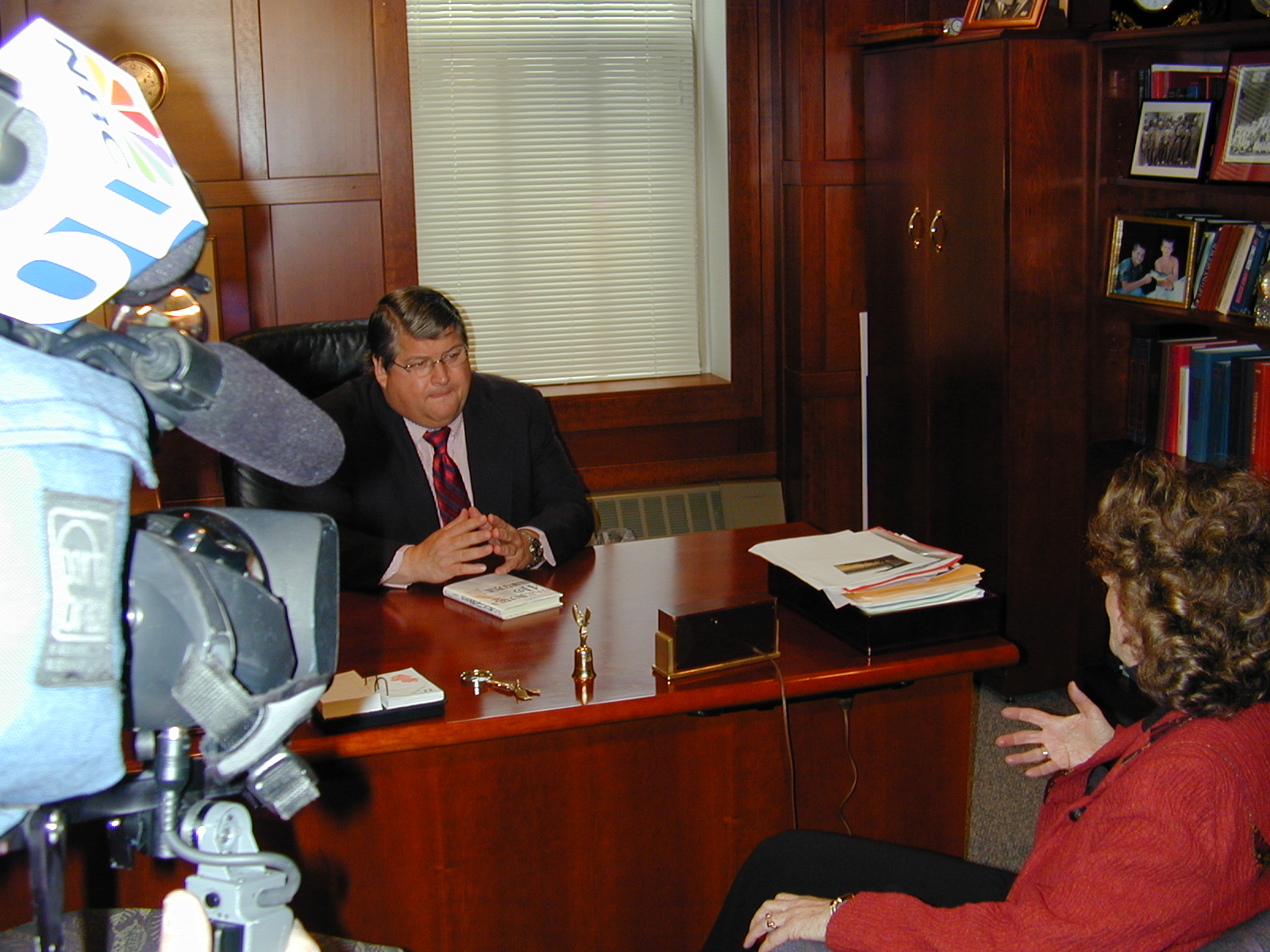
Webcast Puts Spotlight on Mesothelioma Surgery
From Inside the Institute, the staff newsletter of Dana-Farber Cancer Institute
A gifted thoracic surgeon, Dana-Farber's David Sugarbaker, MD, is used to performing before crowds, but May 1 was probably the first time he did so before an arena-sized gathering.
As part of the Brigham and Women's Hospital surgical webcast series, Sugarbaker, chief of the Division of Thoracic Surgery at BWH, conducted an extrapleural pneumonectomy live on the Web. According to BWH, a virtual audience of 4,213 physicians, medical students, and others "tuned in" to the second installment of this educational endeavor, including observers from Japan and Germany. An additional 1,117 visitors viewed the archived webcast in the five days following the surgery.
"For most patients who are treated, we're going for significant life extension now," said Sugarbaker, who operated on a 78-year-old male suffering from malignant pleural mesothelioma, an aggressive cancer most often caused by asbestos exposure that occurs in the pleura, or chest-wall lining, and often invades the lungs. "For the majority of patients, a cure - at the present time - will not be in the cards. But we're making progress."
Assisted by staff surgeon Jeanne Lukanich, MD, Sugarbaker removed the patient's pleura, left lung, and diaphragmatic muscle, and then vigorously scrubbed the chest cavity with a cytotoxic and bacteriocidal wash. The team also rebuilt the diaphragm and created a dynamic pericardial patch made of Gortex.
"Because of surgical innovations such as this, and subsequent aggressive chemotherapy and radiation treatment, we have begun to improve the survival rate within a subset of diagnosed patients," said BWH associate surgeon Yolonda Colson, MD, PhD, who acted as webcast commentator. Now, some mesothelioma patients' lives are measured in years instead of months.
After Colson led off with an overview of the disease and surgery, Lukanich walked the audience through several CT and MR scans depicting the extent of the patient's cancer. "With the extension of the tumor into the fissural surface of the lung," she said, "this patient isn't considered a good patient for a pleurectomy [removal of the pleura, not the lung] because removing the tumor from the fissure is very difficult."
An extrapleural pneumonectomy was called for instead. Although this procedure isn't experimental - Sugarbaker first performed a similar pleurectomy and aggressive chemotherapy wash on Margie Levine 14 years ago (see related story) - it's not widely practiced due to its complexity.
"This procedure not only extends a patient's life, but also gives quality of life," noted Sugarbaker. "Teaching other surgeons how to do this will ultimately give some patients a welcomed treatment option."
Post a comment